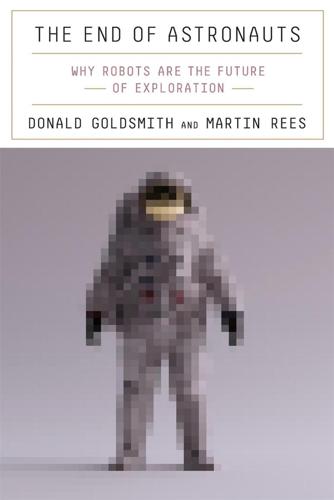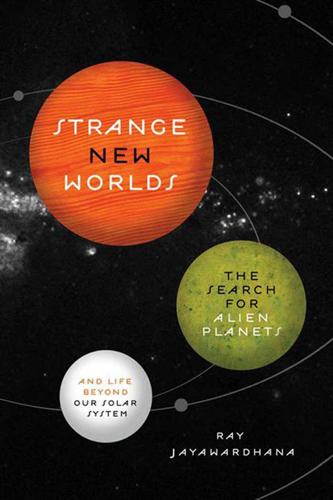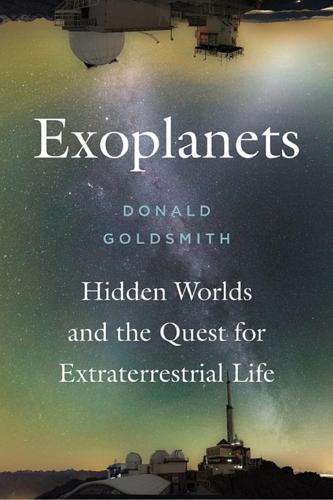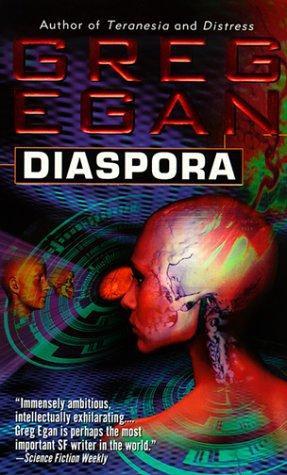
Asteroid Mining 101: Wealth for the New Space Economy
by
John Lewis
Published 22 Jul 2014
Far from the Sun, where it is very cold, even these gases may enter into minerals as, for example, gas hydrates such as Ar.7H2O. Ice, as a natural crystalline substance, is a mineral. Volcanic glass (obsidian) and coal, which are natural but not crystalline, are therefore not minerals. We shall survey the most abundant meteoritic minerals in the next section. The cosmic abundances of selected elements are given in Table IV.2. These abundances are appropriate for the Sun, the original raw material of the Solar System, and most Population I stars (which are late-forming, Sun-like stars, made of recycled material from generations of previous stars). Jupiter appears to have similar composition, except that the lightest elements, hydrogen and helium, have been depleted several-fold, presumably by escape during the earliest phases of planetary formation.
…
Since FeO formation is due to reactions oxidizing iron metal during cooling, the most olivine-rich (and metal-poor) meteorites would be attributed to lower formation temperatures. Exhaustion of metallic iron would occur near 500K (227oC). This wonderfully simple picture is made more complicated by the existence of other, somewhat less abundant, elements and by fractionation between Fe and Si. The chief offender is sulfur, whose cosmic abundance is about 40% of the abundance of iron. At about 680 K (407oC) in a cosmic-composition gas, at a point where Fe oxidation to FeO is only partially completed, FeS would form as the mineral troilite. The iron that enters into FeS formation would be tied up in a stable mineral and would therefore no longer be available for oxidation to FeO.
…
In addition, hydrogen is an essential part of organic polymers, subject to conversion to water by reaction with magnetite and other oxides during strong heating. We require 10 tonnes of water per person to fully populate the water cycle, for agricultural or hydroponic use, for radiation shielding, drinking and cooking water, and water for personal hygiene. Carbon is an absolute necessity for all known forms of life; indeed, its high cosmic abundance and rich chemistry suggest it as the logical basis for all life in the Universe. Carbon is ubiquitous in meteorites, although its abundance is strikingly high only in the carbonaceous chondrites and ureilites. In CI meteorites, C is found mostly in insoluble, involatile organic polymer in amounts up to 5-6% of the total mass of the meteorite.

Big Bang
by
Simon Singh
Published 1 Jan 2004
The next most abundant element in the universe is helium, and together hydrogen and helium overwhelmingly dominate the universe. These are also the two smallest and lightest elements, so astronomers were confronted by the fact that the universe consists predominantly of small atoms rather than large atoms. The extent of this bias is highlighted by the following list of cosmic abundances according to the number of atoms. These values are based on current measurements, which are not far from the values estimated in the 1930s: Element Relative abundance Hydrogen 10,000 Helium 1,000 Oxygen 6 Carbon 1 All others less than 1 In other words, hydrogen and helium together accounted for roughly 99.9% of all the atoms in the universe.
…
These values are based on current measurements, which are not far from the values estimated in the 1930s: Element Relative abundance Hydrogen 10,000 Helium 1,000 Oxygen 6 Carbon 1 All others less than 1 In other words, hydrogen and helium together accounted for roughly 99.9% of all the atoms in the universe. The two lightest elements were extremely abundant, then the next batch of light or medium-weight atoms were much less common, and finally the heaviest atoms such as gold and platinum were rare indeed. Scientists began to wonder why there should be these extremes of cosmic abundance between the light and heavy elements. The supporters of the eternal universe model were unable to give a clear answer; their fallback position was that the universe had always contained the elements in their present proportions, and always would. The range of abundances was simply an inherent property of the universe.
…
In the past, cosmologists had concentrated on the very large. For example, they had studied the universe using general relativity, the theory that described the long-range force of gravity between giant celestial bodies. And they used giant telescopes to look at very big galaxies that were very far away. But to tackle the problem of cosmic abundances, scientists would need new theories and new equipment to describe and probe the very, very small. Before embarking on this part of the Big Bang story, it is first necessary to take a short step back in time and examine the modern history of the atom. The rest of this section tells the story of the physicists who laid the foundations for atomic physics, whose work enabled the Big Bang supporters to investigate why the universe was full of hydrogen and helium.

The End of Astronauts: Why Robots Are the Future of Exploration
by
Donald Goldsmith
and
Martin Rees
Published 18 Apr 2022
Cosmic rays consist of solid particles, generated by exploding stars throughout our Milky Way galaxy and the entire 44 · THE END OF ASTRONAUTS cosmos. Almost all t hese particles are nuclei of the most common elements. The bulk of them consist of single protons (nuclei of hydrogen, the most common element in the universe); others include the nuclei of helium (next in line in terms of cosmic abundance) and more massive nuclei, mainly of carbon, nitrogen, oxygen, and iron. Higher-energy particles tend to be rarer than lower-energy ones, a fortunate circumstance since higher energies imply greater capacity for damage. Measured in units of MeV (1 million electron volts), ordinary solar wind particles have energies around 1 / 1000 MeV.

Strange New Worlds: The Search for Alien Planets and Life Beyond Our Solar System
by
Ray Jayawardhana
Published 3 Feb 2011
We could then point the SETI receivers at those particular worlds for an exhaustive search for signals of artifcial origin. It may be that life is fairly common, but intelligent life is rare. On the other hand, it seems absurd, if not arrogant, to think that we are the only technological civilization in the Galaxy, given 200 billion other suns, the apparent ubiquity of planets, and the cosmic abundance of life’s ingredients. But it’s one thing to guess at probabilities and quite another to have proof. However it arrives, the frst defnitive evidence of life—even of primitive life—elsewhere will mark a revolution in science, perhaps only rivaled by Copernicus’s heliocentric theory that dislodged the Earth from the center of the universe or Darwin’s discovery of evolution that suggested all species on our planet, including humans, descended from common ancestors.

Billions & Billions: Thoughts on Life and Death at the Brink of the Millennium
by
Carl Sagan
Published 11 May 1998
But the Sun, in some respects an average star, puts out most of its energy in the visible. Indeed, to remarkably high precision, the human eye is most sensitive at the exact frequency in the yellow part of the spectrum at which the Sun is brightest. Might the beings of some other planet see mainly at very different frequencies? This seems to me not at all likely. Virtually all cosmically abundant gases tend to be transparent in the visible and opaque at nearby frequencies. All but the coolest stars put out much, if not most, of their energy at visible frequencies. It seems to be only a coincidence that the transparency of matter and the luminosity of stars both prefer the same narrow range of frequencies.

Exoplanets: Hidden Worlds and the Quest for Extraterrestrial Life
by
Donald Goldsmith
Published 9 Sep 2018
These objects became the asteroids that still orbit, for the most part, between Mars and Jupiter.2 At greater distances from the sun, we encounter what astronomers call the “snow line” or “ice line”: the distance from a star beyond which temperatures fall to the point that at least some of the most common volatile compounds—methane, ammonia, carbon dioxide, carbon monoxide, hydrogen sulfide, and water—can condense into solids. Astronomers’ use of the word “ice” includes all of these molecules and their compounds if they achieve solid form. Inside the snow line, astronomers expect that planets w ill form from the cosmically abundant elements silicon, oxygen, iron, and aluminum, with smaller amounts of calcium, magnesium, and sodium, whose compounds dominate terrestrial 137 EXOPLANETS rocks. Beyond the snow line, mixtures made of rock and ice, or mainly of ice itself, should provide significant contributions to the mass of any planet, including the cores of giant planets.

Diaspora
by
Greg Egan
Published 1 Jan 1997
But the third surprise set Orlando's skin tingling, outweighing any drab visions of boiling lakes full of malodorous bacteria. The spectra also showed that the molecules in Swift's atmosphere contained no ordinary hydrogen, no carbon- 12, no nitrogen- 14, no oxygen-16, no sulfur-32. Not a trace of the most cosmically abundant isotopes, though they were present in the normal proportions on Voltaire's nine other planets. On Swift, there was only deuterium, carbon-13, nitrogen-1 oxygen-18, sulfur-34: the heaviest stable isotope of each element. That explained why water vapor was still present, these heavier molecules would stay closer to the surface of the planet, and when they were split the deuterium would have more of a chance to stick around and recombine.

Beyond: Our Future in Space
by
Chris Impey
Published 12 Apr 2015
Carbon is the basic building block of complex molecules, and organic chemistry depends on the versatility of the carbon bonds. Water is a good medium for fostering chemical reactions and building complexity, and it’s a major part of all terrestrial creatures—from 40 percent for beetles to 99 percent for jellyfish. Both carbon and water are cosmically abundant, so setting them as prerequisites for life isn’t very restrictive. Then there is energy. Humans are at the top of a food web reliant on the Sun, but it doesn’t follow that life needs a star. Some terrestrial microbes are sustained by heat from volcanic vents or natural radioactive decay in rocks.

Space Chronicles: Facing the Ultimate Frontier
by
Neil Degrasse Tyson
and
Avis Lang
Published 27 Feb 2012
Given that description of the universe, every galaxy would observe all other galaxies to be receding, leading inescapably to the conclusion that we are not alone, and we are not special. And the onward momentum toward insignificance continued with a vengeance. In the 1920s and 1930s, physicists demonstrated that the fuel source in the Sun was the thermonuclear fusion of hydrogen into helium. In the 1940s and 1950s astrophysicists deduced the cosmic abundance of elements by describing in detail the sequence of thermonuclear fusion that unfolds in the cores of high-mass stars that explode at the end of their lives, enriching the universe with elements from all over the famed periodic table, the top five being hydrogen, helium, oxygen, carbon, and nitrogen.

Coming of Age in the Milky Way
by
Timothy Ferris
Published 30 Jun 1988
Californium is one of the heaviest of all elements; if it were created in the intense heat of exploding stars, then surely the elements between iron and californium— which comprise,- after all, most of the periodic table—could have formed there, too. But how? Happily, nature had provided a Rosetta stone against which Hoyle and his collaborators could test their ideas, in the form of the cosmic abundance curve. This was a plot of the weight of the various atoms—some twelve hundred species of nuclei, when the known isotopes were taken into account—against their relative profusion in the universe, as determined by studying the rocks of the earth, meteorites that have fallen to earth from space, and the spectra of the sun and stars.